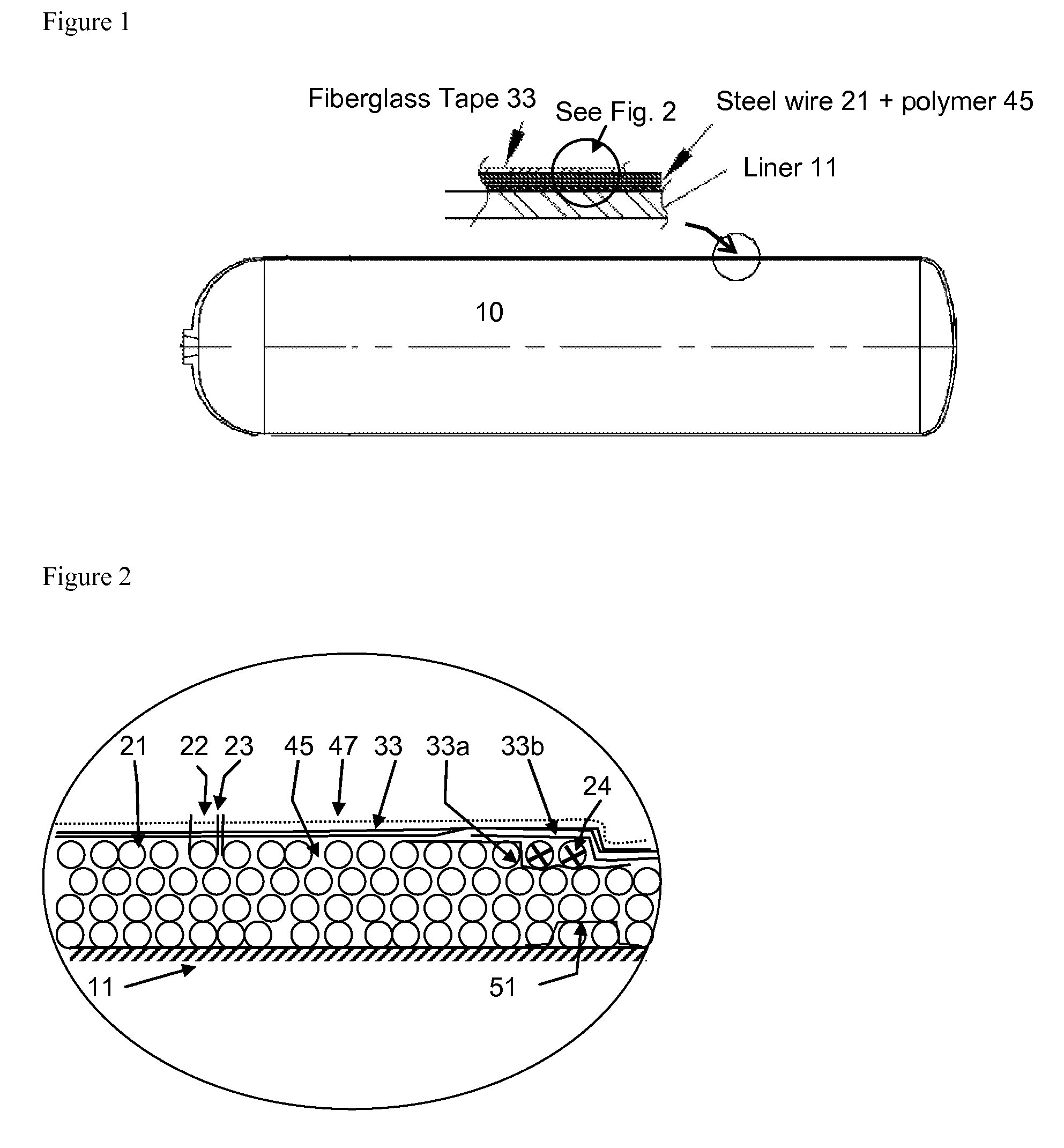Steel wrapped pressure vessel
a pressure vessel and steel technology, applied in vessel construction details, transportation and packaging, manufacturing tools, etc., can solve the problems of lower mechanical properties along the transverse axis of longitudinal filament composites, reduced tensile strength of reinforcing fibers, and significant stiffness of cut ends of wires, so as to achieve good damage resistance protective coating
- Summary
- Abstract
- Description
- Claims
- Application Information
AI Technical Summary
Benefits of technology
Problems solved by technology
Method used
Image
Examples
Embodiment Construction
[0017]Recently a type of light weight pressure vessel was proposed by Prakash in US application 2009 / 0095796 where a high strength thin walled steel liner was circumferentially wrapped with 2000-6000 MPa tire cord quality steel wire. This application is incorporated herein by reference in its entirety. The steel wire or cord can be in the diameter range of 0.05 to 2.5 mm, preferably 0.10 to 2.0 mm. This vessel exhibited a great improvement in burst strength while maintaining a light weight structure comparable to carbon fiber wrapped pressure vessels, but at a much lower cost. Nevertheless, this Prakash cylinder had the same issues of adhering the cut ends of the steel wire to prevent damage to the structure. Prakash, like those inventors before him, had to insure the cut end did not get exposed during and after curing of the polymer.
[0018]This invention relates to a pressure vessel which is light in weight and is used for the storage of gas and is an improvement over the earlier Pr...
PUM
| Property | Measurement | Unit |
|---|---|---|
| thickness | aaaaa | aaaaa |
| diameter | aaaaa | aaaaa |
| diameter | aaaaa | aaaaa |
Abstract
Description
Claims
Application Information
 Login to View More
Login to View More - R&D
- Intellectual Property
- Life Sciences
- Materials
- Tech Scout
- Unparalleled Data Quality
- Higher Quality Content
- 60% Fewer Hallucinations
Browse by: Latest US Patents, China's latest patents, Technical Efficacy Thesaurus, Application Domain, Technology Topic, Popular Technical Reports.
© 2025 PatSnap. All rights reserved.Legal|Privacy policy|Modern Slavery Act Transparency Statement|Sitemap|About US| Contact US: help@patsnap.com



